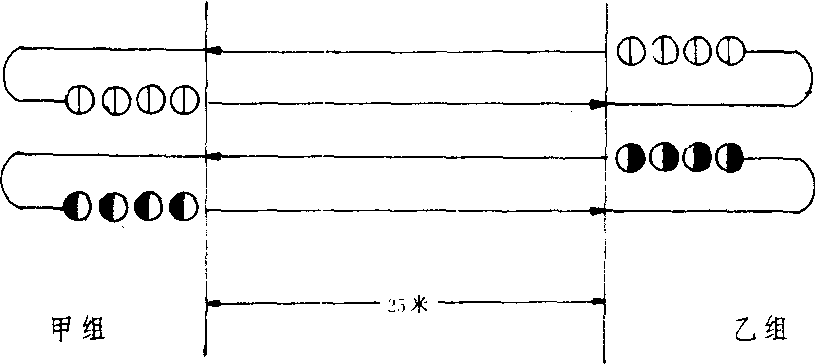迎面接力
又称“穿梭接力赛跑”。

迎面接力
即每队分成两组,相隔一定距离,相对站立,以接力跑形式进行各队间速度比赛的奔跑游戏。游戏准备:在场地上画两条相距25米的平行线作起跑线。游戏方法:把学生分成人数相等的若干队,每队再分成人数相等的甲、乙两组,分别以纵队队形在两条起跑线后相对站立。游戏时,发令后,各队甲组排头迅速地跑向乙组,拍乙组排头的手后,自动地站到乙组队尾。乙组排头拍手后,迅速地跑向甲组,拍甲组第二人的手后,自动地站到甲组队尾。依次进行,每人跑一次,以犯规少、先跑完的队名次列前。游戏规则:❶必须站在起跑线后起跑,不得踏线和越线起跑。❷发令或拍手后,方能跑出。教学建议:❶奔跑距离、接力方式可视学生情况,进行调整或改变。
❷通过游戏要注意加强快速跑技术动作的改进和提高。